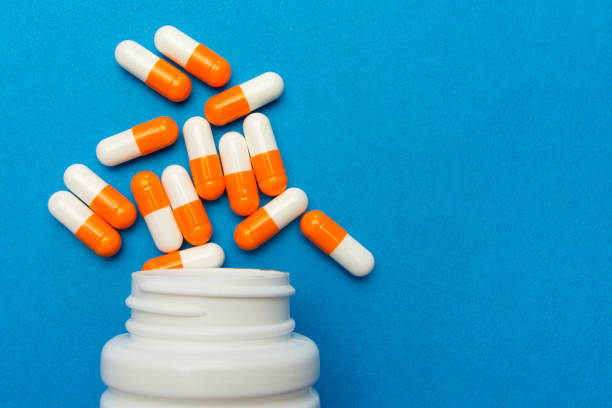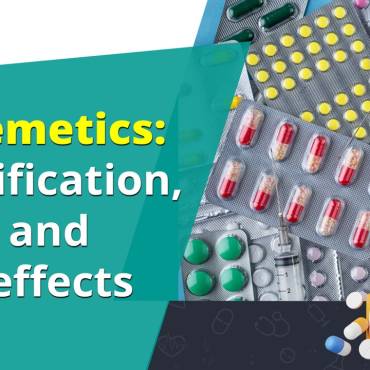What are antibiotics? Well, these are one of the most effective classes of drugs; they exert their therapeutic effect by antagonizing the growth of bacteria. They are not effective against infections caused by viruses, such as the common cold. How do antibiotics work? Each type of antibiotic only works against certain types of bacteria. These drugs are only prescribed for more serious bacterial infections, as many get resolved independently. Antibiotics are also called antimicrobials that can be taken by mouth as tablets, capsules, and liquids. Those who need an antibiotic injection usually suffer from a severe infection. These medicines are also available in topical forms, including creams, lotions, ointments, and lotions for topical application on the skin to treat certain skin infections. Appropriate use of antibiotics is necessary to reduce antibiotic resistance. Germs such as bacteria or fungi become resistant to antibiotics over time, making them less effective. According to the WHO, the world urgently needs to change the way it prescribes and uses antibiotic medicines because of antibiotic resistance- a global threat.
What is antibiotic resistance?
According to reports, more than 2.8 million antibiotic-resistant infections occur in the US each year. And more than 35000 people die as a result of data provided by the centers for disease control and prevention.
Antibiotic resistance is an urgent problem because antibiotics are a cornerstone of modern medicine and most therapeutic procedures rely on functioning antibiotics. Resistance occurs when bacteria become resistant to antibiotic drugs used to treat the infections they cause. Every time an antibiotic is used, it reduces the efficacy for all users because its usage increases the possibility of the bacteria becoming resistant. Resistance reduces the chances of successfully preventing and treating an increasing range of infections, including pneumonia, tuberculosis, HIV, malaria, and blood poisoning.
Resistance against antibiotics is mainly driven by inappropriate use. According to the world health organization (WHO) data, global antibiotic consumption has increased by 36% between 2000 and 2010. Half of this increased use is unnecessary because antibiotic drugs are used to treat illnesses like common colds that are used to treat illnesses such as common cold and flu caused by viruses where antibiotics have no effect. What are antibiotics for? Antibiotics only treat infections caused by a certain bacterium. These drugs can be brought without prescription in many countries or do not have underlying treatment guidelines. These factors increase the risk of resistance because of a lack of knowledge of appropriate antibiotic use.
How does resistance occur?
Bacteria that become resistant can be transmitted to humans through the food chain, animal to human contact, and the environment. It happens when bacteria or fungi can defeat the medicines, especially those discovered to destroy them. This means the bacteria aren’t killed and continue to multiply.
Antibiotic resistance can affect people at any stage of life and the healthcare, veterinary, and agriculture industries. The increased consumption of these drugs is also a cause of concern because, as per studies, a proportion of this quantity will eventually appear in the environment. This is because antibiotics are not fully metabolized by humans or animals and can appear in their urine and faeces. When it comes to livestock, antibiotics are usually given orally in the feed; they are only partially digested and show up in faeces which may be used as manure and then spread into agricultural fields. These residues reach into the soil, contaminating water resources and food supply. A study has shown that antibiotics have an unexpected effect on the development of many life forms and can cause a significant reduction in the growth of plants. The intensity of adverse effects caused by these drugs varies considerably from one person to another. They usually depend on the class of antibiotic used and whether other medicines are being taken simultaneously. The common antibiotic side effects are allergies, skin rashes, diarrhoea, or an imbalance of the intestinal flora.
Bacteria do not have to be resistant to every antibiotic drug to be dangerous. Resistance to even one antibiotic can cause serious health complications. For example:
- Antibiotic-resistant infections that require the use of second-and third-line therapies can affect patients by causing serious adverse effects such as organ failure and prolonged care and recovery, sometimes for months.
- Many medical procedures require the use of antibiotics to fight off infections, including organ transplants, cancer therapy, joint replacement therapy, and the treatment of chronic diseases like asthma, rheumatoid arthritis, and diabetes. In some cases, these infections have no treatments. If these drugs lose their effectiveness, their ability to treat infections and control these public health threats reduces automatically.
The bottom Line
Antibiotics are a group of drugs that are especially discovered to treat bacterial infections. They work by killing bacteria which stops the bacteria from multiplying. It is important to take these drugs correctly. If you do not, they may reduce how they work. So, it is important to follow the instructions given by your doctor. Discuss with your doctor about antibiotics’ side effects.
admin
Latest posts by admin (see all)
- What is Triluma Cream? Uses, Benefits, and How It Works for Skin - December 26, 2024
- What Causes Dark Spots? Understanding the Science of Hyperpigmentation and How Skin Lightening Products Help - December 26, 2024
- Tretinoin Gel vs. Cream: Which Formulation is Right for Your Skin? - December 20, 2024



